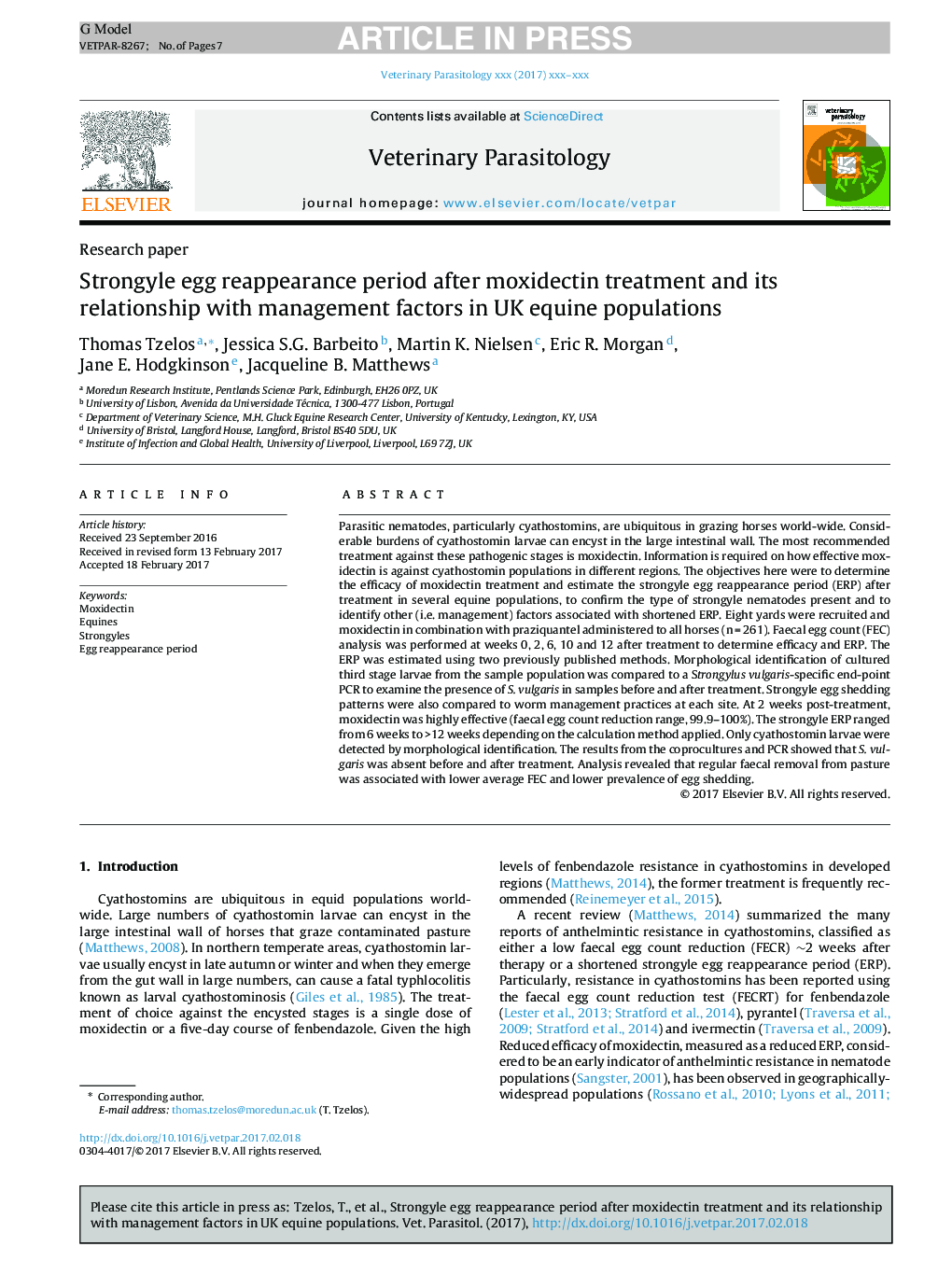| کد مقاله | کد نشریه | سال انتشار | مقاله انگلیسی | نسخه تمام متن |
|---|---|---|---|---|
| 5545759 | 1555639 | 2017 | 7 صفحه PDF | دانلود رایگان |
عنوان انگلیسی مقاله ISI
Strongyle egg reappearance period after moxidectin treatment and its relationship with management factors in UK equine populations
دانلود مقاله + سفارش ترجمه
دانلود مقاله ISI انگلیسی
رایگان برای ایرانیان
کلمات کلیدی
موضوعات مرتبط
علوم زیستی و بیوفناوری
علوم کشاورزی و بیولوژیک
علوم دامی و جانورشناسی
پیش نمایش صفحه اول مقاله

چکیده انگلیسی
Parasitic nematodes, particularly cyathostomins, are ubiquitous in grazing horses world-wide. Considerable burdens of cyathostomin larvae can encyst in the large intestinal wall. The most recommended treatment against these pathogenic stages is moxidectin. Information is required on how effective moxidectin is against cyathostomin populations in different regions. The objectives here were to determine the efficacy of moxidectin treatment and estimate the strongyle egg reappearance period (ERP) after treatment in several equine populations, to confirm the type of strongyle nematodes present and to identify other (i.e. management) factors associated with shortened ERP. Eight yards were recruited and moxidectin in combination with praziquantel administered to all horses (n = 261). Faecal egg count (FEC) analysis was performed at weeks 0, 2, 6, 10 and 12 after treatment to determine efficacy and ERP. The ERP was estimated using two previously published methods. Morphological identification of cultured third stage larvae from the sample population was compared to a Strongylus vulgaris-specific end-point PCR to examine the presence of S. vulgaris in samples before and after treatment. Strongyle egg shedding patterns were also compared to worm management practices at each site. At 2 weeks post-treatment, moxidectin was highly effective (faecal egg count reduction range, 99.9-100%). The strongyle ERP ranged from 6 weeks to >12 weeks depending on the calculation method applied. Only cyathostomin larvae were detected by morphological identification. The results from the coprocultures and PCR showed that S. vulgaris was absent before and after treatment. Analysis revealed that regular faecal removal from pasture was associated with lower average FEC and lower prevalence of egg shedding.
ناشر
Database: Elsevier - ScienceDirect (ساینس دایرکت)
Journal: Veterinary Parasitology - Volume 237, 15 April 2017, Pages 70-76
Journal: Veterinary Parasitology - Volume 237, 15 April 2017, Pages 70-76
نویسندگان
Thomas Tzelos, Jessica S.G. Barbeito, Martin K. Nielsen, Eric R. Morgan, Jane E. Hodgkinson, Jacqueline B. Matthews,